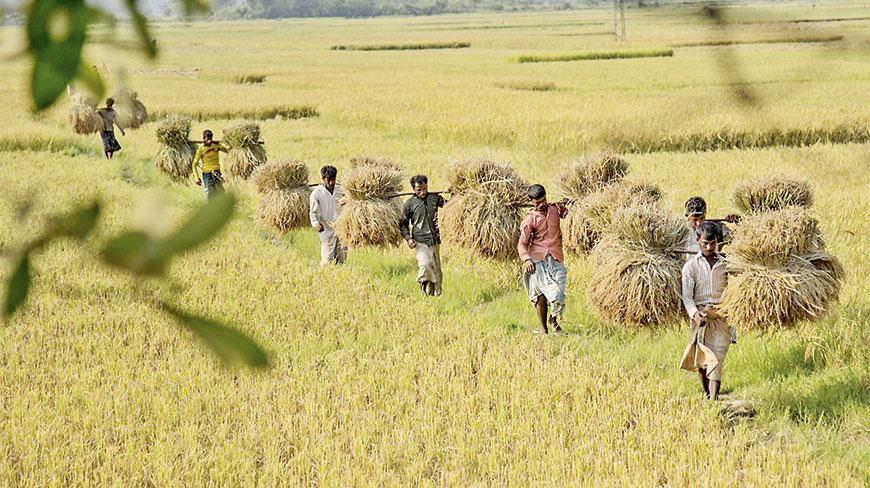Bangladesh will import 100,000 tonnes of rice from Myanmar in a desperate attempt to control the price hike of rice in domestic markets. There is also a plan to import 150,000 tonnes of rice from India, while as much as 20 million tonnes of rice could be imported through public and private means, according to the Secretary of the Food Ministry Mosammat Nazmanara Khanam.
This recent initiative to import Myanmar heralds a somewhat thawing of relationship with Myanmar, after a China-led diplomatic effort to address the Rohingya issue seemed promising to both Myanmar and Bangladesh. The Secretary also told Reuters, “Our main priority is to bring down the prices of rice.” (Ref-1)
At its root, it shows the importance of food self-sufficiency and especially rice self-sufficiency in the South Asian region. Before any further discussion it is important to distinguish between food security and food self-sufficiency. I am quoting directly from ScienceDirect’s article (Clapp 2020) about the differences because I believe it to be the most succinct one available: “A country is considered food secure if food is available, accessible, nutritious, and stable across the other three dimensions (FAO, 2008). But food security as a concept does not distinguish whether that food is imported from abroad or grown domestically (Clapp, 2014). Food self-sufficiency, on the other hand, is focused on the supply, or availability component of food security, and is concerned with ensuring that the country has the capacity to produce food in sufficient quantities to meet its domestic needs. Some analysts also see food self-sufficiency as supporting stability in the food supply, while others contend that it can contribute to instability.” (Ref-2)
So how does food security apply to our region? It is assumed that “sustained production of rice is central to food security in South Asia” (Bishwajit et al. 2013) (ref-3). There are many scholars who believe food self-sufficiency and security policies are detrimental to open food trade initiatives but it’s important to note the nuances of each region and is also equally important to allow flexibilities in such free trade thinking. Clapp (2020) notes, “The binary nature of the debate tends to obscure and downplay the real concerns that countries may have about the risks associated with excessive reliance on trade for their food supplies.” Agricultural trade conversations have been a focal point at the World Trade Organization (WTO) since 2000 (Ref-4). Reforming agricultural trade agreements have been a priority since the Doha Round in 2001, with a concerted effort by developing nations to ensure their agricultural sector can compete with subsidized agro businesses in developed countries. After the 2007-2008 food crisis, debate ensued whether food self-sufficiency is an efficient policy initiative or one that has been forwarded politically rather than economically.
In my opinion, western economists and politicians who have previously been ineffective in pressuring Western powers to reduce subsidies and open up their agricultural sectors have little authority to advise developing nations on how best to achieve food security. The political contexts are far too critical and far too complex to have a clear free trade agreement on food import and exports. Thankfully, in 2013 WTO members agreed to allow public stockpiling and domestic distribution – however, export subsidies were not supported.
Bangladesh is already the third largest producer of rice, producing about 35 million tonnes every year (Ref-5), although almost all of this production is geared towards providing for the domestic market. Climate change, particularly, excessive flooding has recently damaged this internal production capability (Ref-6). It is also interesting to note that Professor Mushfiq Mobarak of Yale University showcased a systematic economic motivation of the Rohingya genocide, right here at Youth Policy Forum’s event “The Rohingya Crisis: Shared Global Responsibility”. Particularly, he noted, “Violence, looting and property damage increases when and where there is increased rice cultivation.” (Ref-7)
This multi-layered nature of the rice crisis in Bangladesh will, in my opinion, require an extensive diplomatic initiative from Bangladesh. While importing rice from Myanmar and India can work as a make-shift solution for Bangladesh for the time being, it’s important to think outside the box for food self-sufficiency centered policies. In line with the latest WTO agreements, we can subsidize domestic production and protect our farmers. Internet of Things has entered the agricultural sphere for better production, and it might be a good time to merge it with our impressive rice research initiatives to ensure we are better prepared for flood-related disasters. Additionally, the nuanced political nature of the rice crisis in light of Professor Mubarak’s findings give us a lot more to think about.
Featured Image Credit: Dhaka Tribune
References:
